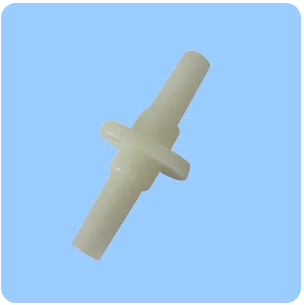Biocompatibility and Patient Safety
Assessing Toxicity Risks in Material Choice
Knowing if medical device materials could be harmful is really important when it comes to keeping patients safe. The main thing we look at here is how these materials interact with body tissues and whether they cause problems. For testing purposes, there are standard procedures like ISO 10993-3 and ISO 10993-5 that check for cell toxicity using lab tests and animal models. These assessments help us understand if a material might irritate tissues, lead to infections, or otherwise be toxic when it touches bodily tissues. Looking at research papers and official reports from places like the FDA also gives useful data about past device issues linked to toxic reactions, which helps manufacturers pick safer options. Getting started with proper biocompatibility checks right from the beginning makes sure medical devices pass all the required regulations and ultimately protect people who need them.
Ensuring Long-Term Implant Biocompatibility
The long term safety and how well medical implants integrate with surrounding tissue really comes down to whether the materials are biocompatible. Researchers need to look at chronic implantation models if they want to understand what happens when these devices stay in the body for years. Studies keep checking out different materials across all sorts of bodily conditions, which helps figure out how long they last before wearing down or causing problems. Post market surveillance data is absolutely critical too. When manufacturers track how implants perform after being approved, they get real world feedback about material reactions and integration issues that lab tests might miss. This kind of monitoring lets companies tweak their designs based on actual patient experiences rather than just theoretical models, which makes implants safer overall and leads to better results for people who need them.
Balancing Strength vs. Flexibility Requirements
Getting the right mix between strength and flexibility matters a lot when picking materials for medical devices. The products need to hold up through repeated usage but still bend or flex where needed to work properly. Looking at things like how much force a material can take before breaking, how stretchy it gets under stress, and how well it handles constant pressure over time helps pick the best options. Material data sheets along with standard testing procedures give engineers real world numbers they can trust. Take titanium alloys for instance. Many manufacturers go with high strength variants for bone implants because they last longer without failing. Clinical trials and years of actual patient data back up why titanium remains so popular despite being more expensive than alternatives.
Wear Resistance in Dynamic Medical Applications
When it comes to medical applications involving moving parts or constant motion, wear resistance becomes a critical consideration for choosing materials. Labs run all sorts of tests that mimic actual usage scenarios to see how different materials hold up against wear and tear over extended periods. Take joint replacements or heart valves for instance these are areas where poor wear resistance means the device won't last as long or function properly. The American Society for Testing and Materials has established various standards that manufacturers must meet so their products can handle what they'll face inside the body day after day. By focusing on wear resistance first, engineers make sure materials don't break down quickly, which keeps medical devices working effectively when patients need them most.
Regulatory Compliance for Medical Materials
Navigating FDA Material Approval Processes
Getting familiar with how the FDA approves materials is pretty important for anyone trying to get their medical devices on shelves. For devices that pose higher risks, companies need to go through premarket authorization first. Lower risk stuff usually needs either a premarket notification or what's called a 510(k) submission. But let's face it, navigating these approval paths isn't always smooth sailing. Many applicants run into trouble because they don't document things properly when it comes to biocompatibility tests or whether materials work well after sterilization procedures. These details matter a lot to the FDA. Companies should really pay close attention to all those guidelines from the agency since requirements change depending on what category their device falls into. Time frames also play a big role in planning production schedules. Some fast track reviews wrap up within a few months, but regular ones often drag on past twelve months, which directly impacts when certain materials can actually be used in manufacturing runs.
International Standards (ISO 10993) and Global Certification
The ISO 10993 standard serves as a key reference point for assessing how safe medical devices are when they come into contact with living tissue. When companies follow these rules, they face fewer roadblocks during the approval process in multiple countries around the world. Medical device makers find that getting their products certified under ISO 10993 opens doors much faster since most major markets recognize this framework already. Certification agencies consistently report that sticking to ISO requirements makes things easier for everyone involved. Products get approved quicker, customers gain confidence in what they're buying, and there's generally less back and forth with regulators. Smart manufacturers know that investing time upfront in meeting ISO standards pays off big time down the line. It keeps them ahead of competitors while minimizing risks like expensive recalls later on, which helps maintain steady business growth over years rather than just short term gains.
Sterilization Compatibility Challenges
Autoclave Resistance Testing Protocols
Getting materials ready for sterilization isn't something to take lightly. Proper testing against steam sterilization methods such as autoclaving should be part of every manufacturer's routine. What happens during these tests? Basically, materials get exposed to high pressure steam to see if they hold up against extreme heat and moisture without breaking down. Keeping materials intact after going through this process matters a lot because even minor damage can mess up how devices work later on. There are plenty of documented cases where certain plastics just couldn't handle autoclaving conditions. We've seen instances where medical equipment had to be recalled because parts warped or turned brittle over time. Take polyethylene for instance – some varieties simply don't stand up well to repeated autoclaving cycles. That's why most companies spend significant time and resources on proper testing before settling on final materials for production runs.
Chemical Exposure in Disinfection Processes
Medical devices get exposed to all sorts of harsh chemicals during routine cleaning procedures, so checking how materials hold up against this stuff matters a lot. We're talking about disinfectants like ethylene oxide and hydrogen peroxide here. What happens? Well, these chemicals don't just sit there harmlessly. They actually break down materials over time, which means devices might not work properly anymore or could even become unsafe for patients. When looking at chemical resistance, manufacturers need to test how things change after repeated contact with these cleaners. The strength, flexibility, basically everything about the material gets affected. Real world data shows some plastic components start to deteriorate pretty badly after multiple rounds of disinfection in hospitals. This isn't just theoretical either it leads to actual safety concerns down the road. That's why smart companies make sure they understand these issues before picking materials, ensuring their products keep performing reliably while meeting those important safety requirements across the entire lifespan of any given medical device.
Cost vs. Performance Optimization
Material Costs Versus Device Lifespan
Finding the right mix between what materials cost upfront versus how long they last is one of those tricky problems when developing medical devices. When companies go for top quality stuff, it usually means spending more money at first, but this tends to pay off because these materials just hold up better in hospitals and clinics where things get pretty rough on equipment. Take something like advanced plastics or titanium metal parts for example. These are definitely pricier than standard options available on the market today, but they don't wear out as quickly which means fewer breakdowns down the road. Companies that run the numbers through lifecycle cost analysis models start seeing where the real money talks. Looking at how much gets spent replacing worn out components versus what was paid initially shows pretty clearly that investing in durable materials actually saves cash in the long run. Plus, devices made from these tougher materials generally perform better overall and need less fixing or swapping out parts since they simply don't fail as often.
Supply Chain Stability in Material Sourcing
Stable supply chains matter a lot when it comes to keeping essential raw materials flowing for medical device manufacturers, particularly during times when markets swing wildly. When supplies run short or prices jump around because of things like political instability in key regions or unexpected weather events, this creates real problems for manufacturers trying to keep production on track while controlling expenses. Smart businesses look at ways to spread risk across different suppliers or explore alternate materials that still meet quality requirements. We've seen plenty of data showing how supply chain problems over the past few years pushed many companies to prioritize stability above all else. They want to avoid those nasty situations where production grinds to a halt or costs skyrocket overnight. Some practical approaches include bringing more sourcing closer to home or building relationships with several different suppliers instead of relying on just one source. These steps help create buffer zones against future shocks while maintaining access to what's needed most.

Innovations in Medical Device Materials
Smart Materials in Next-Gen Devices
Smart materials are changing how we think about medical devices for the future. These special substances have properties that shift when exposed to things like heat, acidity levels, or electric signals. What makes them interesting is this responsiveness allows doctors to create all sorts of new gadgets. Some implants now can actually change shape depending on what's happening inside the body, while certain sensors react instantly to changes in our systems. Researchers are already testing these materials in hospitals, particularly for monitoring blood sugar levels or delivering drugs exactly at the right moment. When treatments match up better with actual patient conditions, outcomes tend to improve significantly. Although still in early stages, preliminary tests show promise. Many experts believe we're just starting to scratch the surface of what these adaptable materials might accomplish in modern medicine.
Sustainable and Recyclable Material Solutions
Medical device manufacturers are starting to adopt sustainable and recyclable materials because of mounting pressure from regulators and changing market expectations. The main push comes from wanting to cut down on environmental impact while meeting what patients and hospitals now expect from green practices. We're seeing biodegradable options show up more often in devices these days, something that works well for large scale operations without sacrificing quality standards. Many firms have begun developing greener alternatives and pushing boundaries when it comes to materials research. Take polylactic acid or PLA for instance, which is being used more frequently in parts that break down naturally after use. Beyond just following rules set by authorities, this trend reflects a broader effort toward responsible business conduct. Sustainable approaches in healthcare aren't just buzzwords anymore they represent where the industry wants to go moving forward.
FAQ
What is biocompatibility in medical devices?
Biocompatibility refers to the ability of a material to be compatible with living tissue without causing irritation, toxicity, or unfavorable biological reactions when used within a medical device.
Why is wear resistance important in medical applications?
Wear resistance is crucial because it ensures that medical devices maintain their functionality and integrity over time, especially in dynamic environments where devices are subjected to repeated movement and stress.
How are materials tested for sterilization compatibility?
Materials undergo rigorous protocols, including autoclave resistance testing, which subjects them to high-pressure steam environments to assess their ability to retain properties under sterilization conditions.

